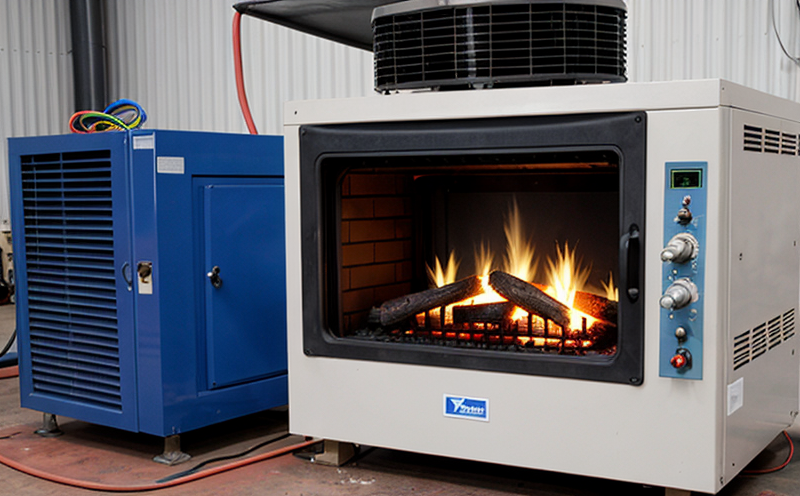ASTM E1530 Thermal Conductance Testing of Optical Materials
The ASTM E1530 standard provides a comprehensive approach to evaluating the thermal conductance properties of optical materials, which is crucial for various applications ranging from lighting fixtures to electronic devices. This testing ensures that optical components can withstand temperature variations without compromising their performance or integrity.
Thermal conductivity plays a significant role in determining how efficiently heat is transferred through an optical material. In lighting and electronics, this property is vital because it affects the efficiency of heat dissipation, which directly influences the lifespan and reliability of products. For instance, in LED lighting, efficient thermal management can prevent overheating, extend product life, and ensure optimal light output.
ASTM E1530 defines a standardized procedure to measure thermal conductance using the guarded hot-plate method. This method involves placing two plates of known thermal conductivity between which the optical material is sandwiched. The temperature difference across this assembly is measured under controlled conditions, allowing for accurate determination of the thermal resistivity and subsequently the thermal conductance.
For quality managers and compliance officers, understanding these tests ensures that products meet industry standards and customer expectations. R&D engineers can leverage ASTM E1530 to innovate new materials with improved thermal properties, while procurement teams can ensure they are sourcing high-quality optical components by verifying their thermal performance.
The guarded hot-plate method used in ASTM E1530 is precise but requires careful specimen preparation and controlled environmental conditions. Specimens must be cut from the intended material to standard dimensions, ensuring uniformity across samples. The apparatus used includes heaters, temperature sensors, and data acquisition systems capable of measuring minute temperature changes.
The results from ASTM E1530 are critical for several industries including automotive, electronics, lighting, and medical devices, where thermal management is paramount. By testing to this standard, manufacturers can ensure their products meet regulatory requirements and perform reliably under various operating conditions.
Applied Standards
The ASTM E1530 standard has been widely adopted in the lighting industry for its rigorous approach to evaluating thermal properties of optical materials. It aligns with broader ISO standards on thermal performance, providing a consistent framework across different regions and industries.
Specifically, ASTM E1530 is complemented by other related standards such as ASTM C794-18, which deals with the chemical analysis of ceramic materials used in lighting applications. Together, these standards ensure that optical components not only perform well thermally but also meet chemical and structural integrity requirements.
The application of ASTM E1530 extends beyond just compliance; it supports continuous improvement by providing a benchmark against which new products can be compared. This ensures that advancements in technology are validated through scientific testing, maintaining high standards across the industry.
Scope and Methodology
| Aspect | Description |
|---|---|
| Test Specimen Preparation | The optical material must be cut into standard dimensions, ensuring uniformity and avoiding any defects that could influence the results. |
| Apparatus Used | A guarded hot-plate apparatus consisting of heaters, temperature sensors, data acquisition systems, and controlled environmental chambers. |
| Temperature Control | The system maintains precise control over the temperature difference between the two plates to ensure accurate measurements. |
| Data Acquisition | Advanced sensors and data acquisition systems capture minute temperature changes, providing detailed thermal conductance data. |
| Results Interpretation | The measured thermal resistivity is used to calculate the thermal conductance, which is then compared against industry benchmarks. |
This method ensures that the results are consistent and reliable across different laboratories and testing facilities. By adhering strictly to ASTM E1530, manufacturers can ensure their products meet rigorous standards, thereby enhancing market competitiveness and consumer trust.
Competitive Advantage and Market Impact
Compliance with ASTM E1530 not only ensures product quality but also provides a competitive edge in the marketplace. By demonstrating adherence to international standards, manufacturers can differentiate their products from competitors who may not meet these stringent requirements.
The ability to measure and report thermal conductance accurately allows for informed decision-making during product development and manufacturing processes. This leads to better-performing products that are more reliable and durable, ultimately enhancing customer satisfaction and loyalty.
In the rapidly evolving lighting industry, where technology is constantly advancing, ASTM E1530 serves as a foundation for innovation. It encourages manufacturers to push boundaries in material science and thermal engineering, leading to breakthroughs that can significantly impact market trends and consumer preferences.





